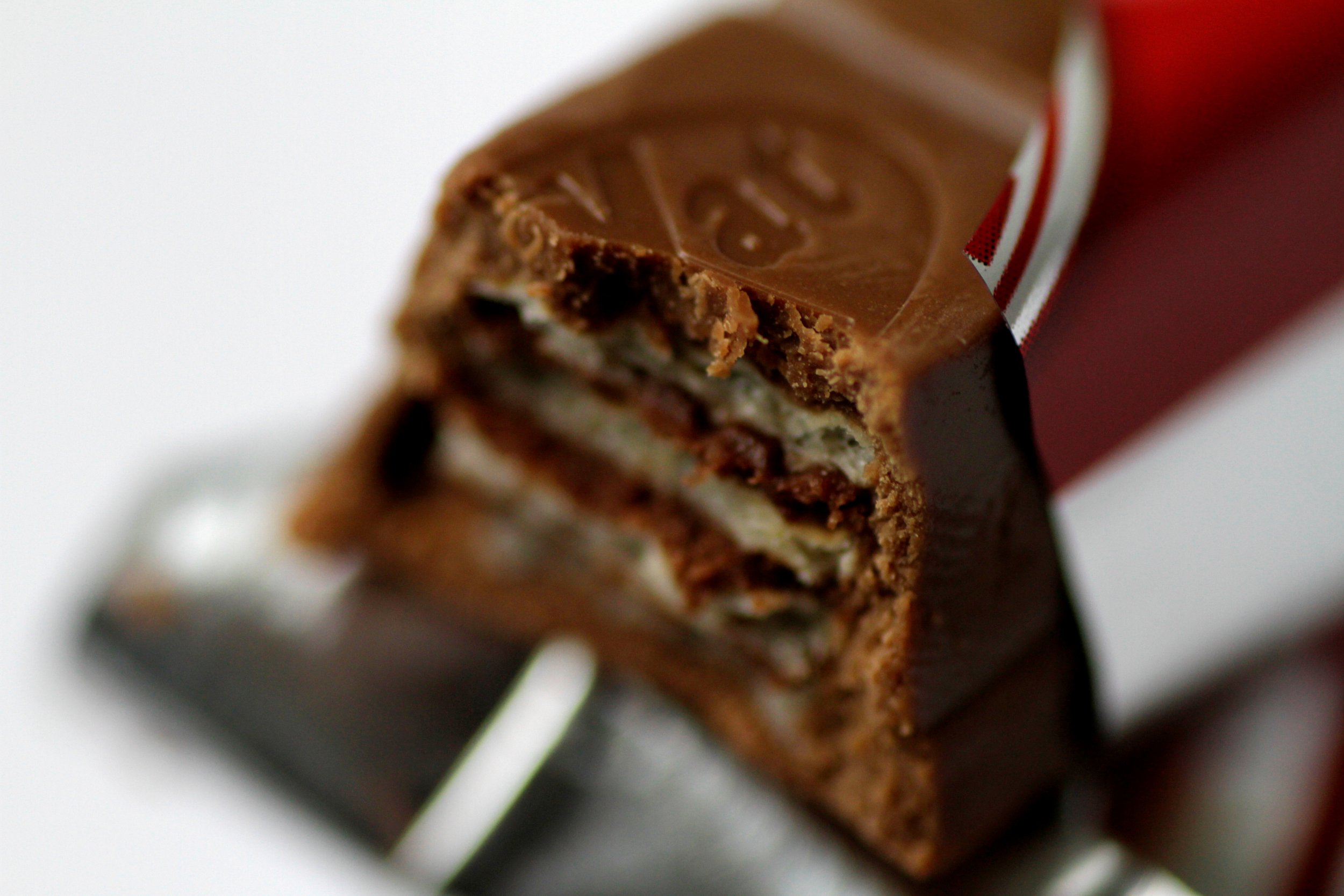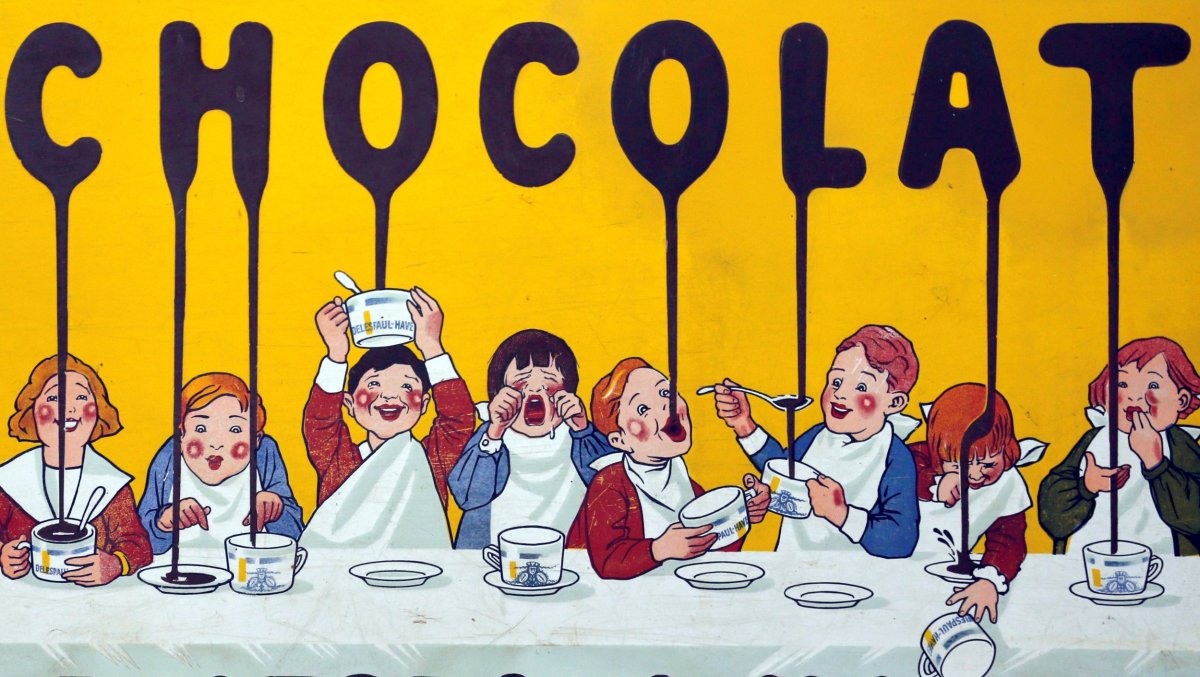
Here's something creepy: The chocolate collected by your children on Halloween barely consists of chocolate at all. These commercial confections are laden with chemicals and sugar. In fact, the mini treats we can't get enough of this time of year often contain more other stuff than actual chocolate. Corporate candy giants do this because it's a cheaper way to produce their product—and because they can.
Todd Masonis, co-founder and CEO of Dandelion Chocolate, a San Francisco-based chocolate maker, said that by law, chocolate companies are allowed to label a candy as chocolate so long as it contains just 15 percent of the real stuff.
"That other 85 percent can contain large amounts of sugar, milk or other additives like PGPR that might scare you," said Masonis. "I think there's a difference between candy and chocolate, and both have their place. Many candies can't even legally be called chocolate—look for 'chocolate-flavored coating' to tip you off. These are often made by replacing the natural cocoa butter in chocolate with trans fat or other oils and mixing it with alkalized cocoa powder."
The quality of the crop, he said, doesn't matter to the companies as well. They're looking for the cheapest supply, and it's not the good kind.

Mark Christian, founder of the C-spot, a go-to website for chocolate connoisseurs, said that commercial candy companies have cleaned up their act a bit but there's not much goodness in those candy bars other than the taste (if that's your thing). "Of course, there's still all that refined white cane sugar, the next target on America's hit list after it deals with the current overdosing of opioids. Yeah, they go together so well…. As Dr. Poppins prescribes: a spoonful of sugar helps the medicine go down."
Here are the ingredients in your chocolate that you should know something about. Hold on to your witch's hat as you read on.
Soy lecithin: This food additive is one of the many products in chocolate used as an emulsifier, an agent that helps bind together ingredients (such as milk, sugar and, of course, chocolate) and keep them from separating once the product goes to store shelves. Emulsifiers also act as thickening agents to create a mouthfeel that evokes the richness of chocolate. These products are used in all kinds of packaged foods.
The chemical is derived from the soy plant. But it's really just the leftover crude oil after the plant has been pressed for the good stuff. It's possible that low-quality soy would produce crude oil that's laden with pesticides, but it's hard to know for sure. Thankfully, like many other non-chocolate products, soy lecithin is typically used in trace amounts in candy.
Artificial flavor: Chocolate and many other foods we buy contain this mystery ingredient. The U.S. Food and Drug Administration (FDA) doesn't require food manufacturers to specify exactly what these flavors are. In general terminology, an artificial flavor is a substance that changes the taste of a food that was not formulated from fruit, vegetable, animal or any plant material. These are flavoring agents that are composed of chemicals.
Food scientists use their alchemy and skill to create flavors that become addictive. They're perfectly orchestrated to have a certain taste when they hit your taste buds, followed by a very specific finish. Some researchers suggests that these flavors have a steroidal effect on our sense of taste, so much so that the food they're imitating ends up tasting flat. Artificial flavors are likely the reason why you're reaching for another fistful of M&Ms.
Cocoa butter: Good news: This ingredient is actually from the cacao plant. Bad news: It's the sludgy stuff that is left after the fruit is pressed, to be processed into cocoa powder. Cocoa butter is solid at room temperature and melts with heat. This ingredient is the reason why Hershey's can make its claims about melting in your mouth. It's also the reason why a bite of most fine bean-to-bar chocolate may not satisfy someone who is used to Kisses. According to Live Science, less healthy fatty acids, like cocoa butter, tend to be solid at room temperature. While not technically unhealthy, cocoa butter (along with lots of sugar) is the reason why eating a lot of Halloween candy could help you pack on the pounds.
Corn syrup: Speaking of calories, corn syrup and other processed sugars are responsible for much of our unneeded caloric intake. Good luck finding commercial chocolate that doesn't have the stuff, because it doesn't exist. Corn syrup, derived from sugar in corn, isn't lethal on its own. However, corn syrup and other refined sugars are linked to obesity, diabetes, heart disease, stroke and plenty of other conditions. Including cavities. So keep your binge to once a year. And brush your teeth.
Artificial coloring: Food colorings make food look attractive and appealing. It can make chocolate appear browner than it actually is in its raw form when milk products are added. Coloring also gives candy, especially the kind with the hard sugar coating, a cheery look. Some of the colorants used in processed foods are banned in other countries, after studies linked a number of the chemicals to conditions such as attention deficit hyperactive disorder and certain cancers. A report from the Center for Science in the Public Interest sums about some of the purported risks and existing evidence. Though all food colorants need to be approved by the FDA, candy companies are not required to disclose which one is in your chocolate.
PGPR: The actual ingredient name—polyglycerol polyricinoleate—is so long and difficult to pronounce that companies just use the initials on labels. That's not always the greatest sign. As some experts say, "If you can't say it, don't eat it." According to the National Confectioners Association, PGPR is an emulsifier that is made from castor bean oil. The organization claims the ingredient is generally safe, and hit as been used by chocolate makers in England since the 1950s. The FDA says studies have shown that PGPR is harmless.
Chocolate companies that use the chemical list it at the end of the ingredient lists, which generally means there's a limited amount in the candy you're eating. The FDA says that the chemical is safe when consumption is limited to 7.5 milligrams per kilogram of body weight. Everything in moderation, as they say.
Uncommon Knowledge
Newsweek is committed to challenging conventional wisdom and finding connections in the search for common ground.
Newsweek is committed to challenging conventional wisdom and finding connections in the search for common ground.
About the writer
Jessica Firger is a staff writer at Newsweek, where she covers all things health. She previously worked as a health editor ... Read more
To read how Newsweek uses AI as a newsroom tool, Click here.








